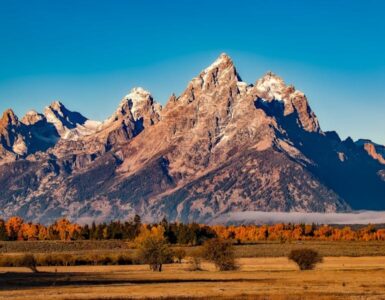Arizona Public Service (APS) is one of very few electric utilities worldwide to achieve a double ‘A’ score for climate and water stewardship this year from the not-for-profit charity CDP, which operates a global disclosure and scoring program designed to encourage investors and businesses to act on environmental issues.
Only four out of almost 6,000 utilities received a double A score this year. One was Pinnacle West Capital Corporation, of which APS is its principal subsidiary. It also is the only North American utility to receive both ratings this year.

“I am extremely proud to announce that for the second straight year, we have secured a place on their prestigious #CDP A List for tackling climate change and acting to ensure water security in our state,” Eric Massey, director of environmental, social and governance (ESG) policy and reporting for APS, said after CDP released the scores last month.
CDP uses a detailed and independent methodology to assess companies, allocating a score of A to D based on the comprehensiveness of disclosure, awareness and management of environmental risks, and demonstration of best practices associated with environmental leadership.
“Taking the lead on environmental transparency and action is one of the most important steps businesses can make, and is even more impressive in this challenging year marked by COVID-19,” CDP CEO Paul Simpson said in extending congratulations to the companies who made the A List this year.
APS commitment to 100 percent carbon-free electricity
APS received the score for its transparency and efforts to protect air and water including a commitment to deliver 100 percent clean, carbon-free electricity by 2050.
The utility has been adding battery energy storage to its utility-scale solar plants in Arizona and expanding its renewable energy portfolio, including recently signing a power purchase agreement for 200 megawatts of additional wind energy. It has reduced its consumption of groundwater 22 percent from 2014 to 2019. The utility also operates the Palo Verde Generating Station, the largest nuclear plant and the single-largest generator of carbon-free electricity in the U.S.
CDP’s annual environmental disclosure and scoring process
CDP, which recently celebrated its 20th year, created the global disclosure and scoring program to promote corporate environmental transparency and provide information for environmentally minded investors, companies, cities, states and regions to manage their environmental impacts.
In 2020, more than 515 investors with more than $106 trillion in assets and 150-plus major purchasers with $4 trillion in procurement spending requested companies to disclose data on environmental impacts, risks and opportunities through CDP’s platform. More than 9,600 responded – the highest ever.
“The scale of the risk to businesses from climate change, deforestation and water insecurity is enormous, and we know the opportunities of action far outweigh the risks of inaction,” Simpson of CDP said. “Leadership from the private sector will create an ‘ambition loop’ for greater government action and ensure that global ambitions for a net zero sustainable economy become a reality.”
Arizona electric utilities facing forces of nature head on
The recent CDP score is one of many examples of how Arizona’s three largest utilities — APS, Salt River Project (SRP) and Tucson Electric Power (TEP) — have become some of the most forward thinking companies when it comes to the environment.
It’s a matter of survival. Arizona’s extreme heat and dry conditions present a unique challenge for electric companies. For example, over the past 25 years, about a dozen Arizona locations topped the nation for having the hottest year, including Buckeye, Laveen, the Yuma airport and Bullhead City. Phoenix is now the hottest city, according to national climate data.
To address the forces of nature head on, the utilities have invested heavily in renewable and clean energy infrastructure and are advancing new technologies like battery storage and solar energy.
They also have been focused on protecting and conserving diminishing water supplies.
SRP, for example, is involved in replenishing the state’s water supply through a massive public-private reforestation project, the Four Forest Restoration Initiative (4FRI). The Phoenix region’s largest water provider is also on target to meet its 2035 Sustainability Goals, which call for a reduction of CO2 emitted from generation by 65 percent by 2035 and 90 percent by 2050.
TEP, which has set a goal to provide more than 70 percent of its power from wind and solar resources by 2035, also has committed to eliminate the use of surface water for power generation and a 70 percent reduction in groundwater use.
To see the full list of companies that made this year’s CDP A List, along with other publicly available company scores, go to: companies scores.
















Add comment